The Hearty and Flavorful Traditional Guatemalan Breakfast: A Culinary Journey
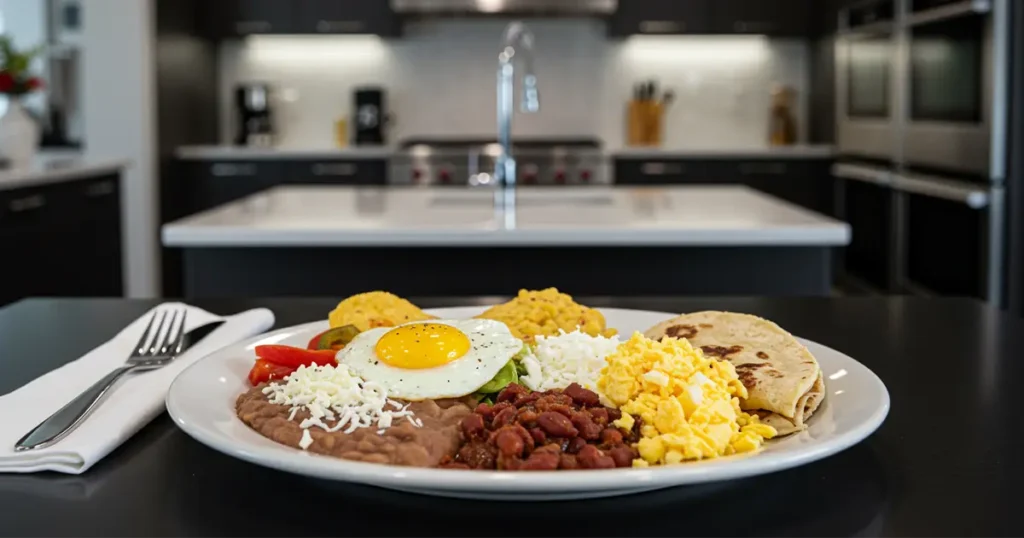
Guatemala, the land of eternal spring, is a country brimming with vibrant culture, ancient history, and breathtaking landscapes. But beyond its Mayan ruins and volcanic peaks lies a culinary scene that is as rich and diverse as its heritage. At the heart of this gastronomic tapestry is the beloved traditional Guatemalan breakfast, known locally as Desayuno Chapín.
More than just a meal to start the day, it's a deeply ingrained cultural experience, a symphony of flavors and textures that fuels the nation and offers a delicious window into Guatemalan life. This hearty, protein-packed platter is a daily ritual for many, setting the stage for a day of work, exploration, or family gatherings.
The beauty of a traditional Guatemalan breakfast lies in its comforting simplicity and the use of fresh, locally sourced ingredients. It’s a testament to the country's agricultural bounty, featuring staples that have nourished generations. From the mountains to the coasts, while minor variations exist, the core elements remain remarkably consistent, providing a unifying culinary experience across this diverse Central American nation. Join us as we delve into the delightful components of this iconic meal, explore its cultural significance, and discover where you can savor its authentic taste.
What Makes a Traditional Guatemalan Breakfast? The Key Components
A typical Guatemalan breakfast is a colorful and generous spread, designed to provide sustained energy. It's a harmonious blend of savory and slightly sweet elements, with each component playing a crucial role in the overall flavor profile.
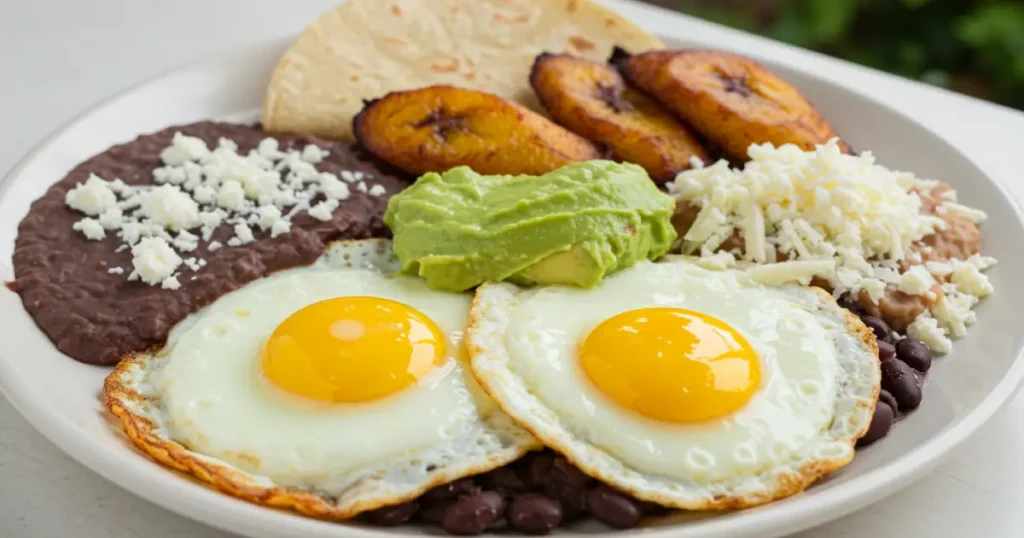
Eggs – The Protein Powerhouse (Huevos)
Eggs are a cornerstone of the traditional Guatemalan breakfast. They are most commonly served scrambled (huevos revueltos) or fried (huevos fritos). If you opt for fried, you might be asked if you prefer estrellados (sunny-side up) or volteados (over easy or well done). A particularly popular preparation is huevos picados, where scrambled eggs are cooked with finely diced tomatoes and onions, adding a fresh, aromatic dimension. This simple addition elevates the humble egg into a more flavorful and texturally interesting dish. Sometimes, green bell peppers or a touch of local herbs might also find their way into the scramble. The eggs provide a substantial protein base, making the breakfast truly satisfying.
Frijoles Volteados – The Creamy Delight (Refried Black Beans)
No traditional Guatemalan breakfast would be complete without a generous serving of black beans, specifically frijoles volteados. These are not just any refried beans; Guatemalan black beans are renowned for their unique flavor and creamy texture. The process typically involves slow-cooking the beans with subtle seasonings like onion and garlic until tender. They are then mashed and refried, often in a small amount of oil or lard, until they achieve a thick, almost paste-like consistency that is rich and deeply savory.
Sometimes, they are fried until the exterior is slightly crisped, offering a delightful contrast in texture. Frijoles volteados are more than a side dish; they are a beloved staple, providing essential fiber and protein, and their earthy flavor perfectly complements the other components of the breakfast.
Plátanos Fritos – Sweet & Savory Harmony (Fried Plantains)
Adding a touch of sweetness to the savory ensemble are plátanos fritos. These are ripe plantains, sliced (often lengthwise or into rounds) and fried until they are beautifully caramelized on the outside and soft and sweet on the inside.
The natural sugars in the ripe plantains create a delicious golden-brown crust when fried. This sweet counterpoint to the eggs, beans, and cheese is a hallmark of the traditional Guatemalan breakfast and is eagerly anticipated by many. The contrast between the sweet, tender plantains and the more savory elements of the meal is a defining characteristic that makes this breakfast so unique and appealing.
Queso Fresco – A Touch of Freshness (Fresh Cheese)
A small portion of queso fresco (fresh cheese) is usually present on the plate. This is a soft, white, and often slightly crumbly cheese with a mild, salty flavor. It doesn't melt like aged cheeses but rather adds a cool, fresh, and subtly tangy element that cuts through the richness of the other ingredients.
Sometimes, a "queso seco" (a drier, saltier cheese) might be offered, or even a local artisanal cheese depending on the region. Its primary role is to provide a contrasting texture and a clean, milky flavor that brightens the entire dish.
Cream or Crema – The Luscious Drizzle
Often accompanying the beans and plantains is a dollop of crema. This Guatemalan cream is similar to sour cream or crème fraîche but typically has a milder, less tangy flavor and a thinner consistency. It adds a luscious, cooling richness that pairs wonderfully with the warm, savory beans and the sweet fried plantains.
A drizzle of crema can tie the different elements together, adding another layer of texture and flavor to the traditional Guatemalan breakfast.
Aguacate – The Green Gold (Avocado)
Given Guatemala's status as the birthplace of the avocado, it's no surprise that slices of fresh avocado often grace the breakfast plate. The creamy, buttery texture and subtle nutty flavor of a perfectly ripe avocado add a healthy fat component and a touch of green freshness. Guatemala boasts many varieties of avocados, and their inclusion in breakfast highlights the country's rich agricultural heritage.
Tortillas – The Essential Companion
The undisputed vehicle for enjoying a traditional Guatemalan breakfast is the corn tortilla. Usually handmade and served warm, these tortillas are thicker and more flavorful than their mass-produced counterparts. They are used to scoop up beans, eggs, or to create small, informal tacos with the various components. Corn, or maíz, has profound cultural significance in Guatemala, dating back to the ancient Mayan civilization, who considered it a sacred crop. The presence of tortillas at every meal, including breakfast, underscores this deep-rooted connection.
Pan Francés – The Crusty Alternative (French Bread)
While corn tortillas are king, especially in rural areas and traditional settings, you'll often find "pan francés" (French bread) offered as an alternative or an addition, particularly in cities and larger towns. This Guatemalan version of French bread is typically a small, crusty roll, perfect for dipping into coffee or accompanying the savory elements of the breakfast.
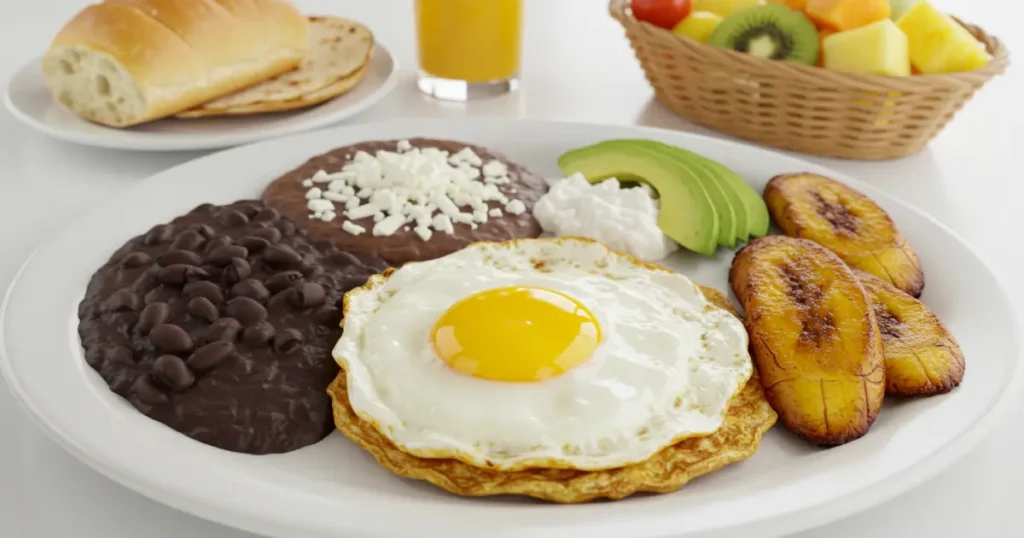
Fresh Fruit – A Tropical Touch
To round off the meal, a small serving of fresh, seasonal tropical fruit is sometimes included. This might be slices of papaya, mango, pineapple, melon, or banana. This light, refreshing element provides natural sweetness and vitamins, cleansing the palate after the richer components of the traditional Guatemalan breakfast.
Beyond the Basics: Additions and Variations
While the core components form the foundation of most Guatemalan breakfasts, there are several additions and regional variations that can make the meal even more substantial or tailored to local tastes.
Meats and Sausages
For an even heartier start to the day, various meats can be added. "Longaniza," a Guatemalan pork sausage seasoned with spices like achiote, and "chorizo," another type of pork sausage that is often spicier, are popular choices. These are typically fried or grilled and served alongside the eggs. In some instances, a small piece of grilled steak ("carne asada") or chicken might also be offered, transforming the breakfast into a truly formidable meal.
Sauces and Condiments
To add an extra layer of flavor or a kick of spice, various condiments are often available. "Chirmol" is a popular Guatemalan salsa made with roasted or charred tomatoes, onions, cilantro, and sometimes a hint of chili. It provides a smoky, fresh flavor that enhances the eggs and beans. Bottles of "picante" (hot sauce), often homemade or from local brands, are ubiquitous on Guatemalan tables, allowing individuals to customize the heat level of their traditional Guatemalan breakfast.

Regional Twists on the Traditional Breakfast
While the template for the traditional Guatemalan breakfast is widely recognized, slight regional variations can be found. For example, in coastal areas, you might encounter breakfasts that subtly incorporate local seafood, though this is less common than the standard version. Highland areas might feature heartier versions with different local sausages or cheeses. However, the fundamental combination of eggs, beans, and plantains remains the most widespread and iconic representation of a Guatemalan morning meal.
The Cultural Significance of a Guatemalan Breakfast
The traditional Guatemalan breakfast is more than just sustenance; it's a cherished cultural institution. For many Guatemalans, it's a time for family to gather before the day's activities commence. It's a moment of connection, sharing, and enjoying the simple pleasures of good food. The meal itself reflects Guatemala's rich agricultural landscape – the corn for tortillas, the beans, the avocados, the plantains, and the world-class coffee are all products of its fertile lands. It’s a direct connection to the earth and to the generations of farmers who have cultivated these ingredients. Furthermore, the emphasis on corn and beans has deep roots in Mayan culinary traditions, which continue to influence Guatemalan cuisine today. Starting the day with such a complete and nourishing meal is a way of life, preparing individuals for the physical demands of their work or the mental focus required for their studies. It's a symbol of hospitality and national pride.
Where to Experience an Authentic Traditional Guatemalan Breakfast
If you're traveling in Guatemala, experiencing an authentic "Desayuno Chapín" is a must. Here are some of the best places to find it:
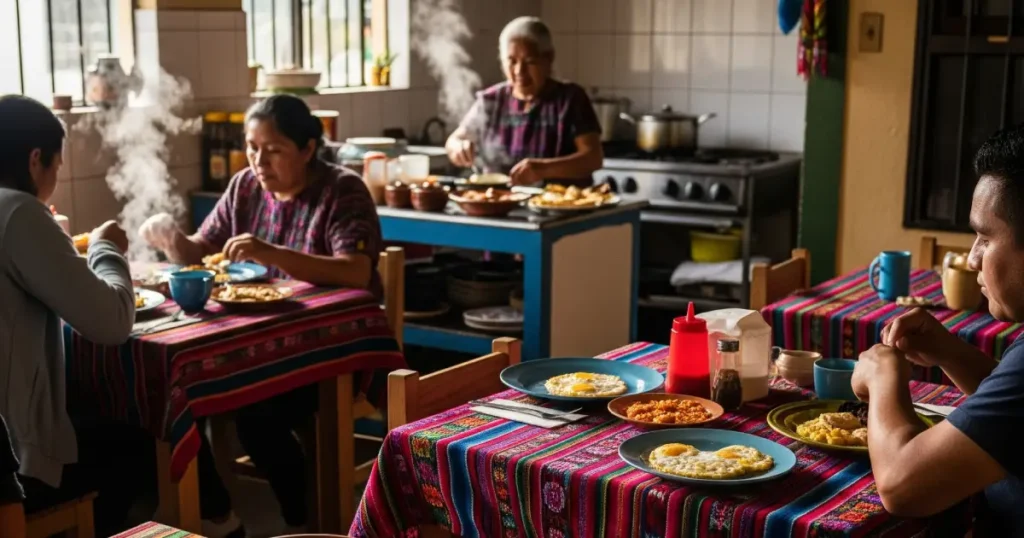
- Local "Comedores": These are small, often family-run eateries that offer traditional, home-style Guatemalan food at affordable prices. Comedores are perhaps the best places to find a truly authentic traditional Guatemalan breakfast, often prepared with recipes passed down through generations.
- Markets ("Mercados"): Guatemalan markets are vibrant hubs of activity, and many have food stalls that serve hearty breakfasts to shoppers and vendors alike. Eating breakfast in a bustling market is a fantastic way to immerse yourself in local life.
- Restaurants Specializing in Guatemalan Cuisine: Many restaurants, especially those catering to both locals and tourists, will feature a classic Guatemalan breakfast on their menu. These establishments often provide a comfortable setting to enjoy the meal.
- Hotels and Guesthouses: Most accommodations, from budget guesthouses to upscale hotels, will offer a Guatemalan breakfast option, recognizing its importance to both local and international visitors.
- In Guatemalan Homes: Undoubtedly, the most authentic experience is to be invited to share a traditional Guatemalan breakfast in a local home. If you have the opportunity, it's a gesture of hospitality that you'll long remember.
The text snippet you provided rightly points out that it's "Served on most restaurants’ breakfast menus," which is a testament to its ubiquity and popularity. Asking for "spicy chile sauce on the side" is also a great tip for those who enjoy an extra kick!
The Perfect Accompaniments: Beverages with Your Breakfast
No traditional Guatemalan breakfast is complete without a fitting beverage to wash it all down.
Café de Guatemala – World-Renowned Coffee
Guatemala produces some of the world's finest coffee, and a cup of freshly brewed Guatemalan coffee is the most common and beloved accompaniment to breakfast. Whether you prefer it "café negro" (black coffee) or "con leche" (with milk), the rich aroma and smooth flavor of Guatemalan coffee are the perfect complement to the hearty meal. Many regions in Guatemala, such as Antigua, Huehuetenango, and Atitlán, are famous for their distinct coffee profiles.
Avena – Warm Oat Drink
"Avena" is a warm, comforting oatmeal-based drink, often flavored with cinnamon and sugar. It's a popular breakfast beverage, especially on cooler mornings in the highlands, providing additional nourishment and warmth.
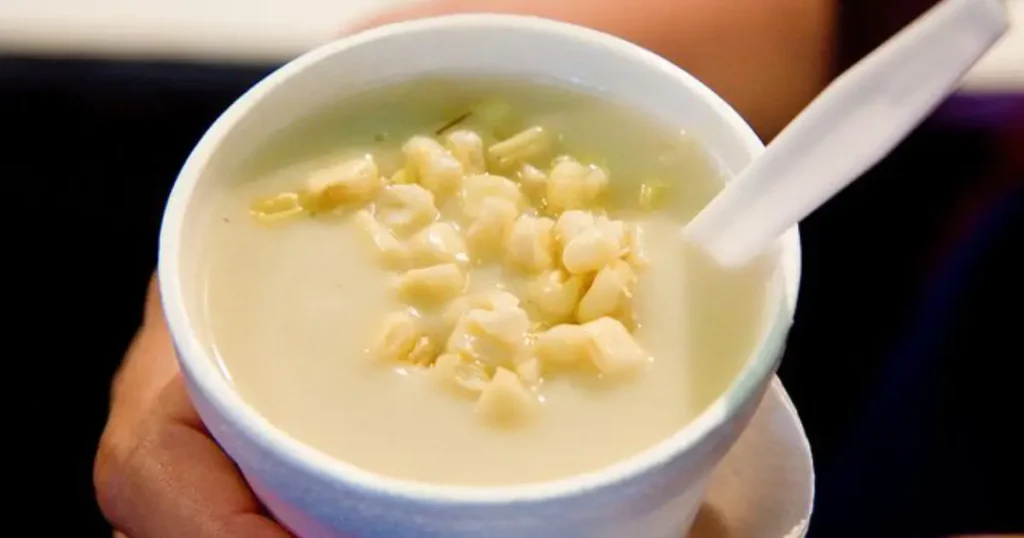
Atol de Elote – Sweet Corn Drink
"Atol de Elote" is a traditional warm beverage made from fresh corn, milk (or water), cinnamon, and sugar. It’s thick, creamy, and sweet, reflecting the Mayan reverence for corn. While it can be enjoyed at various times, it sometimes appears as a special breakfast treat.
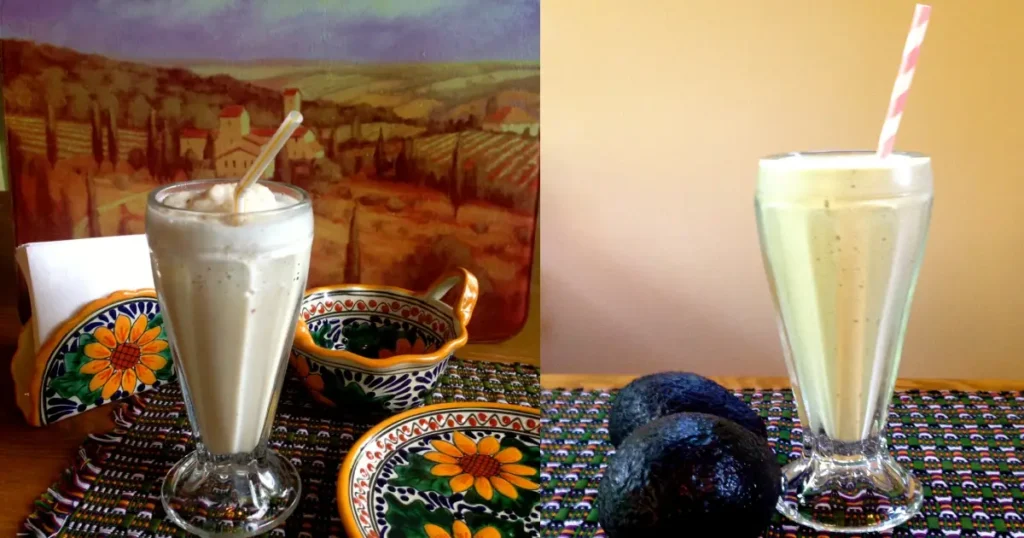
Licuados – Fresh Fruit Smoothies
"Licuados" are fresh fruit smoothies, typically made with water or milk and a variety of tropical fruits like papaya, banana, pineapple, or strawberries. They offer a refreshing and healthy beverage option alongside the traditional Guatemalan breakfast.
Recreating the Magic: Making a Traditional Guatemalan Breakfast at Home
You don't have to be in Guatemala to enjoy the delights of its traditional breakfast. With a few key ingredients, you can recreate this satisfying meal in your own kitchen.
- Source your ingredients: Look for ripe plantains (they should have black spots), black beans (canned can work in a pinch, but dried beans cooked from scratch are best), fresh eggs, queso fresco (feta can be a substitute if queso fresco is unavailable), and avocados.
- Prepare the beans: If using dried beans, cook them until tender, then mash and refry them with a little oil, onion, and garlic until they are thick and creamy.
- Fry the plantains: Slice ripe plantains and fry them in a little oil until they are golden brown and caramelized on both sides.
- Cook the eggs: Prepare your eggs as desired – scrambled, fried, or "huevos picados" with tomato and onion.
- Assemble your plate: Arrange the eggs, refried beans, fried plantains, a slice of queso fresco, and some avocado slices on a plate. Serve with warm corn tortillas or crusty bread.
- Don't forget the coffee! Brew a pot of good quality coffee, preferably Guatemalan, to complete the experience.
Making a traditional Guatemalan breakfast at home is a wonderful way to explore new flavors and bring a taste of Central American sunshine to your table.
traditional Guatemalan breakfast
Is far more than a simple morning meal; it is a vibrant expression of Guatemala's culture, history, and agricultural abundance. Its harmonious blend of textures and flavors – the savory eggs and beans, the sweet plantains, the fresh cheese and avocado, all accompanied by warm tortillas and rich coffee – creates a culinary experience that is both deeply satisfying and uniquely Guatemalan. Whether you are exploring the ancient Mayan ruins, hiking volcanic trails, or simply soaking in the local atmosphere, starting your day with a "Desayuno Chapín" is an essential part of any Guatemalan adventure. We encourage you not only to seek it out when visiting this beautiful country but also to embrace its comforting simplicity by trying to recreate it in your own home. It’s a delicious reminder that sometimes, the most traditional meals are the ones that nourish not just the body, but also the soul.

Leave a Reply